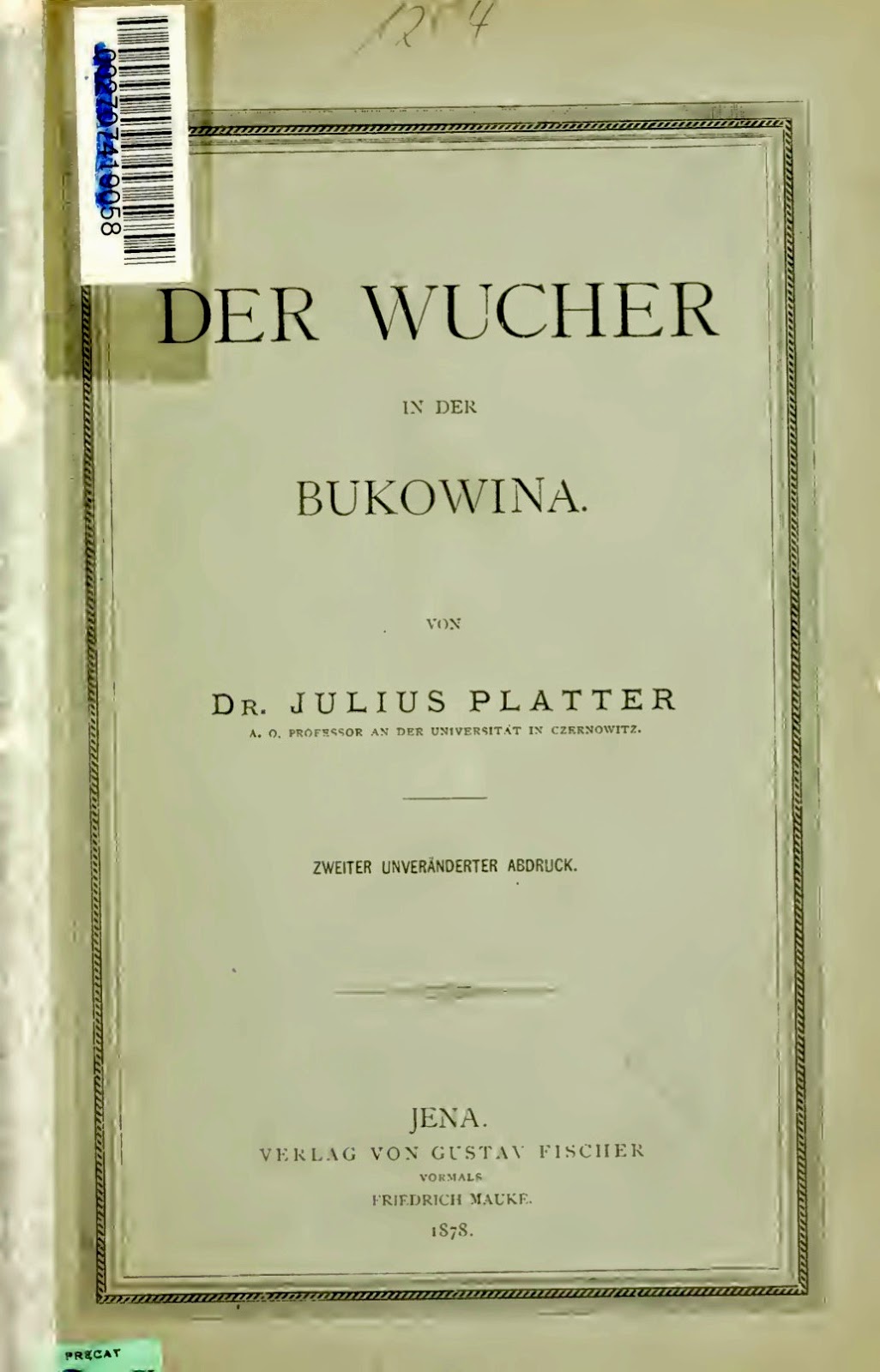Excerpt from the tractates "A Jew to Jews" and "Why Only Yiddish?" by Chaim Zhitlowsky: "One would not find a relatively accurate description of the material life of Bukovinian and Galician Jews in the pages of local Jewish newspapers. These papers are occupied with supposedly higher callings, such as describing rabbinic jubilees, praising the charitable work of ladies’ committees, polemicizing against antisemitism, and debating the question of which language should be used for conducting Sabbath services. Jewish poverty simply does not exist for these representatives of the satisfied bourgeoisie. The issue therefore seems all the more pronounced when it appears in any serious economic studies of eastern Austria. To give just a few examples of the scale of Jewish poverty - examples that at times surpass even the usual things we are accustomed to hearing about the blessed Jewish Pale, we offer a short passage from the work of Professor Platter, 'Sociale Studien in der Bukovina.' He discusses the Jewish population in Czernowitz, the largest city in the Bukovina region. We have selected this particular region and city because Bukovina has for ages been known as the 'Jewish Eldorado', while Czernowitz, with 50 percent of its population comprised of Jews, 'can rightfully be called of Jewish city.'
Professor Platter notes that the vast majority of Jews in Czernowitz are extremely poor, and that most parts of the city are filled with 'wretched, dirty, stinking hovels.' He then provides us with a description of street scenes that he himself witnessed:
The ideal filthy, ragged man, whose image can be conjured by the average Western European only in his wildest fantasies, really exists here and is visible at every step. You see pants made from twenty or thirty different scraps of material but that still consist mainly of holes; you see frock coats that lack the entire back side and whose owners, unfortunately, are wearing neither waistcoats nor undershirts. I saw completely naked little girls between four and six years of age playing with half-naked boys in the dust of the capital’s streets. But the main fashion one sees are large hordes of men in kaftans, and the sight of these garments alone can ruin even the heartiest appetite.
This is a picture of the streets, but it is not difficult to guess what kind of image of filth and poverty he would have drawn for us had he looked inside the 'wretched, dirty, stinking hovels.' Platter’s book was published fifteen years ago, in 1878, and perhaps the people of Czernowitz have become better dressed and more fashionable since then, out of concern that such 'jolly landscapes' not offened the sensibilities of enlightened Western Europeans. But we have every reason to doubt that they have managed to escape from Jewish poverty, given that we have factual and relatively articulate descriptions of the impoverished, destitute condition of the Jewish masses not just from Czernowitz but also from nearly every town in Galicia and Polish Prussia (such as Poznan).
Living next door to this poverty are the notorious Jewish trading and banking firms and wealthy Jewish landowners who have begun the process of displacing Polish magnates from their inherited estates. The 'Jewish landowner' is a new concept that the Jews have introduced into the sphere of finance and fortune after emancipation. The means by which a Jew can become a landowner will become apparent once we turn to examining the second question raised above concerning Jewich occupations and the sources of livelihood.
The existence of poverty among the Jewish masses provides sufficient evidence that emancipation opened up very few new opportunities for them. The fact is that the life of the masses has remained as it was before. The basic mode of economic existence for the overwhelming majority - the petit- and middle-trader, moneychanger, business agent, tavernkeeper, craftsman, mechanic, teacher, butcher, and spiritual proletarian - is that in the morning they have no idea how they will satisfy the hunger of their large families that night. How do the upper 10,000 employ themselves, then? They are traders en grand, as the so-called liberal professions refer to them … and … they lend money on interest! Galicia and Bukovin aare almost exclusively agrarian regions. Peasants supply the main source of labor power, and Polish landowners supply the main source of exploitation. Agrarian culture is characterized almost entirely by abject peasant poverty and by the frivolous carefree incompetence of the landowners. The rotten foundation of economic life on which Jews found one of the primary sources of their material existence, usury, was produced by the easy and loose lifestyle of the undisciplined magnates combined with the wretched drunkenness of the poor and ignorant peasantry."
 |
| Hersch Dovid Nomberg, Chaim Zhitlowsky, Sholem Asch, I. L. Peretz, Avrom Reyzen (Czernowitz Conference, 1908) |
Courtesy: Internet Archive


No comments:
Post a Comment